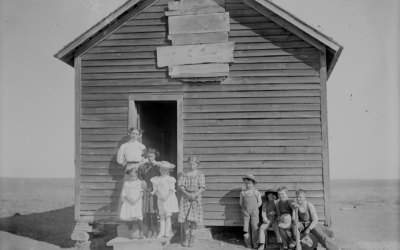The 1930s were hard times for many Nebraskans, but it was also a time of expanding horizons. Wider availability of cars meant more families could travel the state. To help them find their way, a massive Nebraska traveler’s guide was published.
Note: the word Indian is used instead of Native American as it was the norm at the time.

The Depression years of the 1930s were hard times for many Nebraskans. Yet it was also a time of hope and expanding horizons. Personal transportation, in the form of automobiles, was becoming increasingly available. Even if the Model T was old, it could still get the family down the road for a little rest and relaxation.
During the thirties “tourist camps” (later to become motels) began to spring up along major highways. Federal public works money was used to build recreation areas and national parks, creating new things to do and see. Even if they couldn’t go in the latest style, Americans were on the move.
The Works Progress Administration capitalized on this interest in travel by hiring unemployed writers, photographers, and artists to create a series of guidebooks for each state. Nebraska’s Guide was published fifty years ago, in 1939. It provides a fascinating picture of what Nebraska offered to tourists and vacationing citizens alike.
In the guide’s foreword, Historical Society Superintendent Addison Sheldon reminded readers that “Some of us in Nebraska know what it is to have made the first wagon track across an unbroken seas of grass into a new land, with no guide but the sun, distant hilltops, and our own resolution…We had to find our way and leave a trail which others could follow and improve.” The Nebraska guide was to be an aid to modern-day pioneers. “This book is another road starter. It is the first attempt to put into one compact handy volume the story of Nebraska’s land and its people and a guide to every part of the State.”
Travelers in 1939 had the benefit of 13 federal and 93 state highways, but they still faced some of the challenges of tourists in horse-and-buggy days. Drivers were advised that “in the summer days are usually so warm that travelers often drive at night.” A shovel was a necessity in the Sandhills, because roads “are often blocked by fine sand.” The speed limit of 50 mph meant that travelers in 1939 could cover in one hour the distance it took Oregon trail immigrants a week to traverse.
Tourists without cars could still explore the Cornhusker state. Nebraska boasted 11 railroads and 11 different bus lines. The well-heeled traveler in a hurry could fly to Omaha, Grand Island, or North Platte via commercial airliner. Private planes flew to many communities across the state.
A calendar of events of interest to travelers lists many activities still going on fifty years later. Horse-racing at Ak-Sar-Ben, bucking broncs at the Burwell Rodeo, the Omaha Indian Powwow, and the State Fair were drawing cards then as now. Other events, like the Chimney Rock Passion Play and Southeast Nebraska’s Apple Blossom Day, have gone by the wayside.
Nebraska, A Guide to the Cornhusker State is available in paperback. It still provides useful information for tourists and fascinating reading for the armchair traveler.




